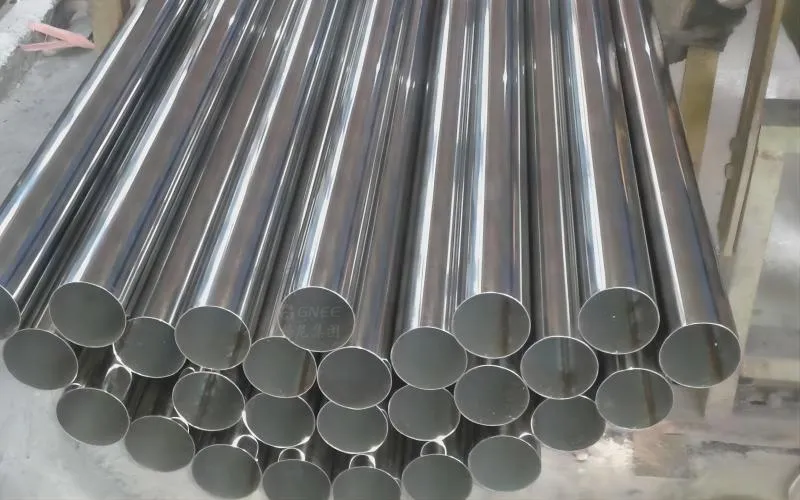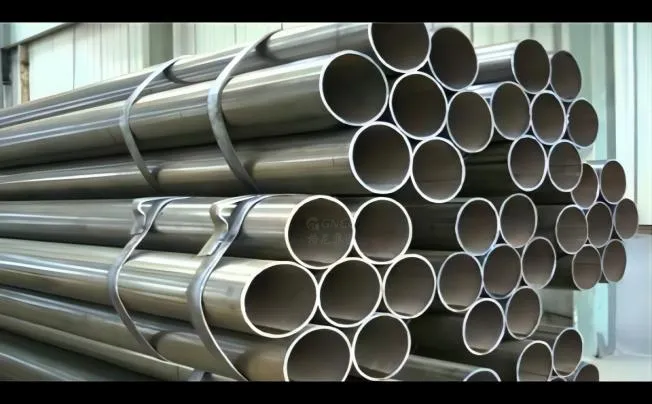What Affects Stainless Steel Pipe Prices?
1. Material Quality
The quality of the material is one of the key elements that impact the cost of stainless steel pipe. Various grades of stainless steel have varied properties and functionalities. The costlier the stainless steel pipe gets, the higher the grade. For instance, 304 stainless steel pipe costs less than 316 stainless steel pipe due to the latter’s added alloying elements, which boost the former’s strength and resistance to corrosion.
2. Specifications for Pipes
The pipe requirements have an impact on the cost of stainless steel pipes as well. The pipe’s length, wall thickness, and size all have an impact on its price. Because they cost more to make and need more labor and raw materials, larger diameter or thicker pipes are more expensive than smaller or thinner pipes. Furthermore, the cost of customized pipes may increase if they need unique manufacture or surface treatment.
3. Situation of Market Supply and Demand
The price of stainless steel pipes is significantly influenced by the law of supply and demand. Price changes may result from shifts in the market’s supply and demand. Prices will increase if supply is limited and demand is high. On the other hand, prices might decrease if supply outpaces demand. Demand and supply in the market are influenced by political and economic variables such as inflation, exchange rates, and trade policy.
4. Production and Delivery Expenses
The cost of manufacturing and transportation can have a big impact on stainless steel pipe prices. The price of the pipe will depend on the caliber of the components and the manufacturing methods. Furthermore, especially for large or heavy pipes, the distance between the manufacturing plant and the shipment destination may raise the cost of shipping. The price of the pipe may additionally include import tariffs, shipping costs, and taxes.
5. Sales and Special Offers
You can save a lot of money by purchasing stainless steel tubing in bulk or during sales. For large orders, many manufacturers provide discounts, longer payment terms, and other advantages. But before making a large purchase, you should think about the pipe’s quality and the supplier’s standing.
6. Macroeconomic Policy
One of the most important factors influencing price variations for steel is policy. The most significant policies in the global steel market are those about import and export, currency-affecting monetary policy, and sustainable development. For instance, interest rates and currency strength are strongly correlated. An increase in interest rates results in increased borrowing costs, which frequently draws investors seeking better returns to one currency over other pairings. In other words, a stronger currency is typically indicated by higher domestic interest rates or predictions of a rate hike, which in turn lowers steel costs.
Steel costs have increased as a result of “carbon neutrality,” one of the most discussed ideas in sustainability programs. A significant change in the steel sector, including temporary production cuts that drive up steel prices, is anticipated as a result of China’s announced aim to achieve carbon neutrality by 2060. More than 110 countries have committed to achieving net-zero carbon emissions by the middle of the century.

7. Anti-dumping and Tariffs
The tightening of anti-dumping laws and the enactment of taxes on an expanding number of steel varieties are directly linked to the increase in steel prices on the international market.
A few years ago, China produced a significant amount of the world’s steel, and the price of steel decreased globally. Since then, though, an increasing number of nations—including the US and the EU—have implemented anti-dumping tariffs to wean themselves off of China’s reliance on steel and instead turn to domestic production.
China has lowered steel production in reaction to new anti-dumping regulations and tariffs, which has resulted in a global shortage of steel relative to demand. Of course, China’s shipments of steel abroad have decreased as well. Steel prices are rising as a result of supply gaps caused by the inability of several global steel mills to meet market demand for steel.
The higher duties on steel imports into the US from other nations provide another illustration of the significant effect tariffs can have on steel prices and the global economy.
Over thirty percent of the steel consumed in the United States is imported; the country has never been self-sufficient in this regard. Tariffs on imported goods dramatically raise production costs for American firms in all industries, given the significance of steel in the industrial sector. U.S. steel prices surged to levels far higher than those in the majority of other countries shortly after the tariff rises were announced. They were 50% higher than those in Europe and 80% higher than those in China. There is no doubt that this has put a strain on the US economy and increased dangers.
8. Seasons and Weather
Products made of steel see fluctuations in price throughout the year. Steel price swings are mostly caused by two types of seasonal factors:
Seasonal weather and its effects on shipping Prolonged downpours, copious snowfall, and other severe meteorological phenomena will have a detrimental impact on steel transportation.
The need for steel fluctuates with the season. For example, high temperatures will slow down infrastructure and building construction, which will lower the steel demand.


